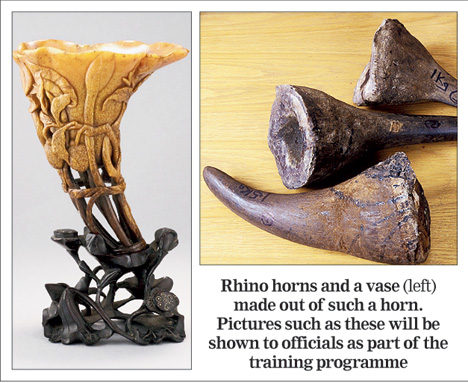
Calcutta: A global wildlife research organisation is collaborating with the state forest and police departments and several central agencies to combat wildlife trafficking.
The Wildlife Conservation Society (WCS), India, plans to train men and women of the agencies and departments involved in fighting wildlife trafficking, which has emerged as a multi-billion dollar trade. From learning to distinguish between a fake and a real tiger skin to preparing watertight cases against wildlife traffickers, the training will be exhaustive, WCS officials said.
The WCS has signed a memorandum of understanding with the Wildlife Crime Control Bureau to conduct the training. The training will involve the Border Security Force, enforcement directorate, directorate of revenue intelligence, department of revenue and the department of posts. Some agencies are already on board and talks are on with the rest.
"The idea is to involve all the agencies that are involved. The Bangladesh border, guarded by the BSF, is an important transit route for wildlife trade. Similarly, the postal department has a role because some illegal materials, snake venom for example, are often smuggled in postal parcels," said Prakriti Srivastava, country director, WCS India.
The project will cover six north-eastern states (excluding Arunachal Pradesh) and Bengal in the first phase, which is expected to start in November. The states are important because of their proximity to Nepal, Bhutan and the Southeast Asian countries.
"Southeast Asia is the biggest market for wildlife products from India," Srivastava told Metro from Bangalore, the headquarters of WCS India. "Bengal has a porous border with Bangladesh and is a critical transit route for wildlife trafficking."
The training will focus on three key aspects - identification, investigation and prosecution. The training module on intelligence gathering will include tips on infiltrating poaching and smuggling gangs as moles. The participants will also be made familiar with various animal parts - such as ivory, rhino horns and pangolin scales - and their demand and usage in international markets.
The participants in the training programme will be taught how to tell a fake product from a real one. Some of the signs of a real tiger skin are the white colour of the upper lip near the nasal openings, presence of white hair on the front inner surface of the ear lobe and neck stripes originating from the middle portion of the head and going out to front legs in an angular fashion.
The trainees will also be taught how to prepare cases that will withstand legal scrutiny and lead to early conviction. "Weak cases often result in the guilty going scot-free. Most of the agencies lack sufficient knowledge about the provisions of the wildlife protection act," Srivastava said.
"The project is unique because it will bring together all the agencies that have to deal with wildlife traffickers," said Agni Mitra, regional deputy director, wildlife crime control bureau. Joydip Kundu, general secretary of the Society for Heritage & Ecological Researches (SHER), welcomed the move but said any wildlife protection effort should include people living on the fringes of forest areas. "It cannot happen in isolation. Involvement of common people is a must," he said.










